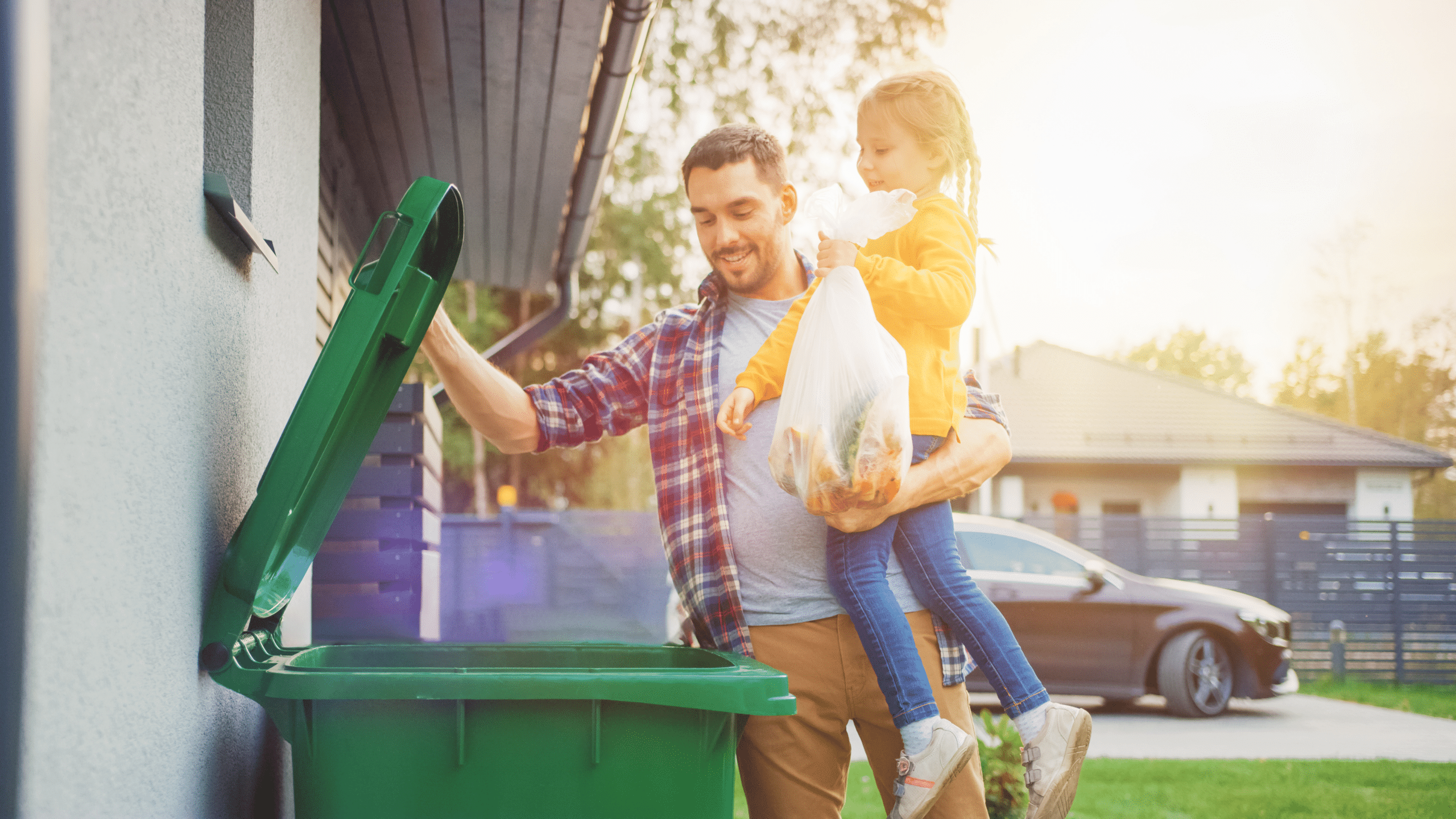Advantages and Features of Automatic Sorting
Envac Sorting means that waste is automatically separated based on the colour of waste bags. This provides higher quality recyclable materials, reduces environmental impact, and creates a flexible solution suitable for all types of communities, from large cities to rural areas, residential neighbourhoods to sparsely populated regions, and everything in between.
The system can be integrated with both automated vacuum waste collection systems and traditional manual collection, making it easy to meet new recycling requirements and upgrade your waste management without needing to change existing infrastructure. When introducing source separation for a new waste stream, such as textile waste or small electronics, it can easily be implemented by introducing a new coloured bag.
The system is also adapted for different types of users within the same location. Areas can have different collection needs users and types of waste – convenient, flexible, and tailored to your needs, regardless of type of development; commercial, residential etc.
Cleanliness & Quality
.

Waste bags
One colour for each waste stream

Happy users
& Better Recycling Rates
Lower cost
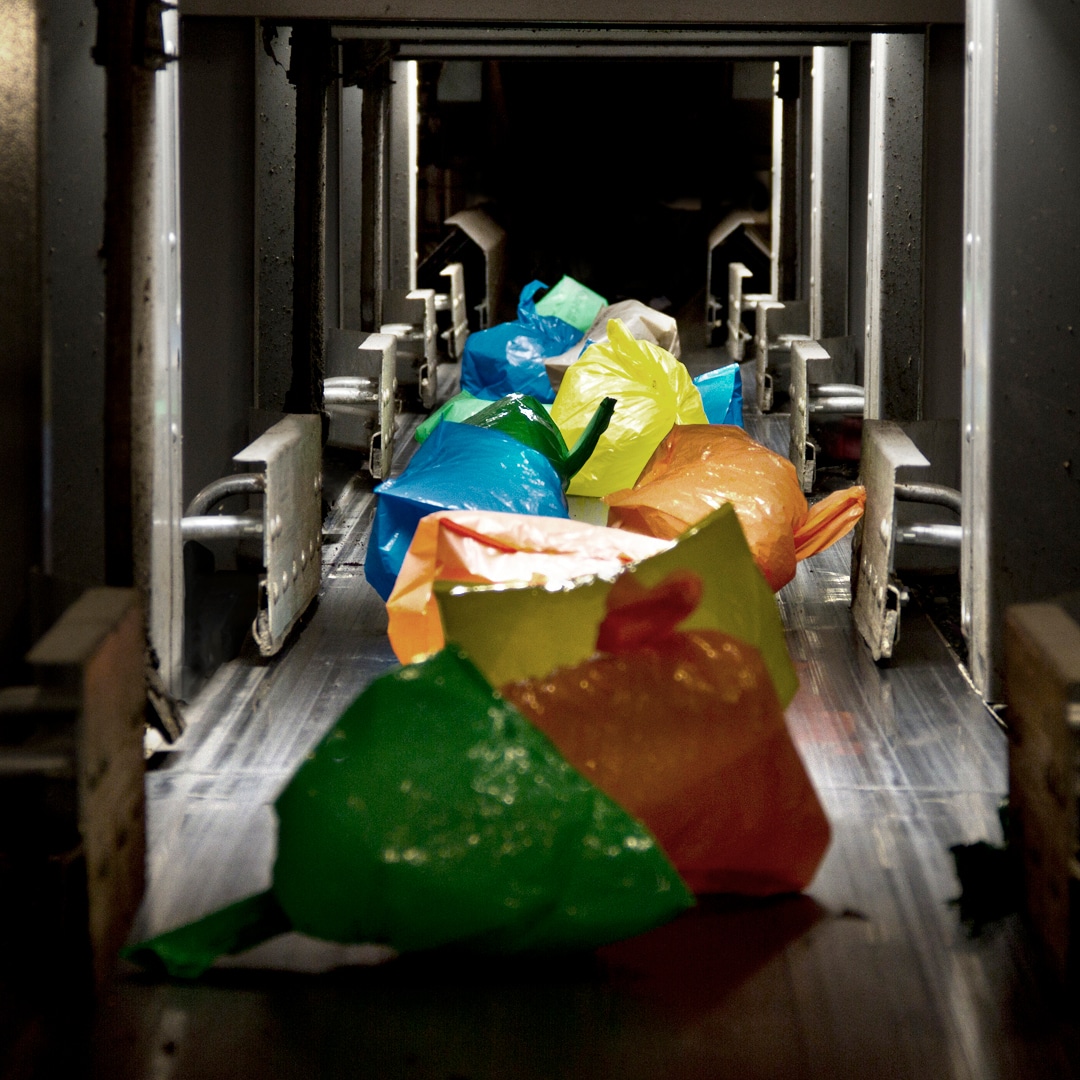
Smooth and Flexible Logistics
Envac Sorting can easily be integrated with both automated vacuum waste collection and traditional waste collection. All waste bags, regardless of waste stream, are disposed of in the same chute or container and transported together to the sorting facility. There, the bags are automatically identified and sorted into the correct container, eliminating the need for special vehicles and simplifying logistics, even when cooperating between several municipalities/councils.
No changes to existing infrastructure are required; the same bins can be used, but in fewer numbers. Fewer bins on the property mean less space is needed and greater comfort for residents. The result is a cost-effective, space-saving, and user-friendly solution for modern waste management. Key is also fewer vehicles/emissions interactions with public/pedestrians.
Sorting facilities are flexible and can easily be adapted for new fractions or collection methods; for example, both Halmstad and Ljungby have expanded their facilities.

Purity and Quality of Fractions
By using colour-coded waste bags, each waste stream is kept clean and free from contamination. With, among other things, optical technology, the bags are identified and separated with high precision, resulting in higher quality recycled material and better conditions for a circular economy.
Envac offers various types of service agreements for facilities, where, for example, colour adjustment checks are carried out to ensure optimal sorting. The facilities also have a remote connection function, allowing many service issues to be resolved quickly and easily at a distance.
Through continuous development of data collection, increasingly better data can be provided to customers for future decisions, such as waste quantities, energy consumption, and more.
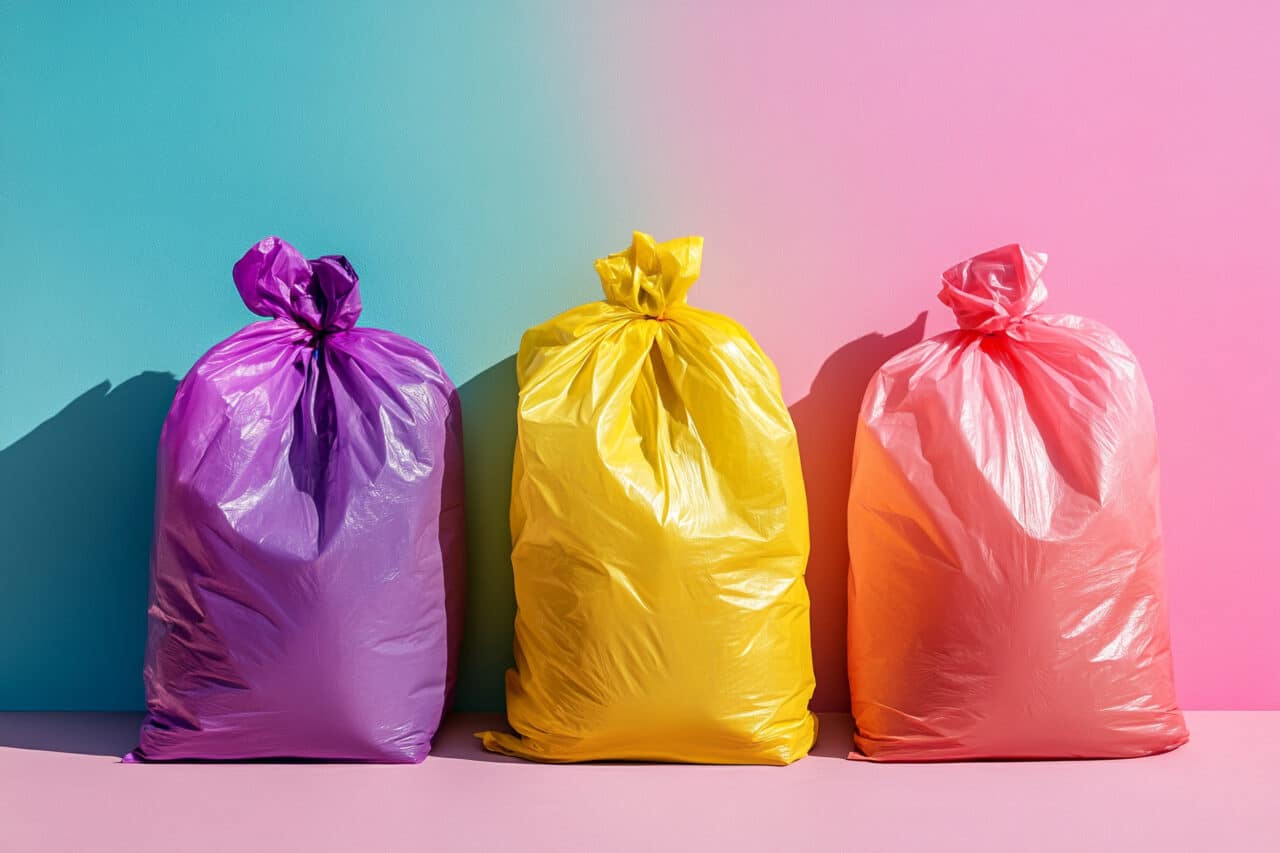
The Waste Bags – Why Are They Used?
Colour-coded waste bags are a central part of the system and make it easy for users to sort correctly. Each material has its own colour, which minimises the risk of incorrect sorting. The bags also protect the contents from contamination and facilitate handling at the sorting facility.
As new types of materials and bags are constantly being developed on the market, the technology is also advancing. There are also possibilities for various fine-sorting solutions where bags and materials are separated even further.
The waste bags are provided by your municipality/council and are included in the waste collection fee.

Impact on End Users and Behaviour
The system is designed to be easy to use for everyone, regardless of previous experience with source separation. Clear information and simple sorting at home increase engagement and make it easier for residents to contribute to increased recycling rates. Experience shows that households significantly reduce their residual waste when using Envac’s system.
We have developed materials and tips to help you as a customer easily engage your residents and further increase the sorting rate.
Envac can also act as an advisor to you as a customer, both for a complete review of your waste management and to achieve maximum impact on the end user, the residents.
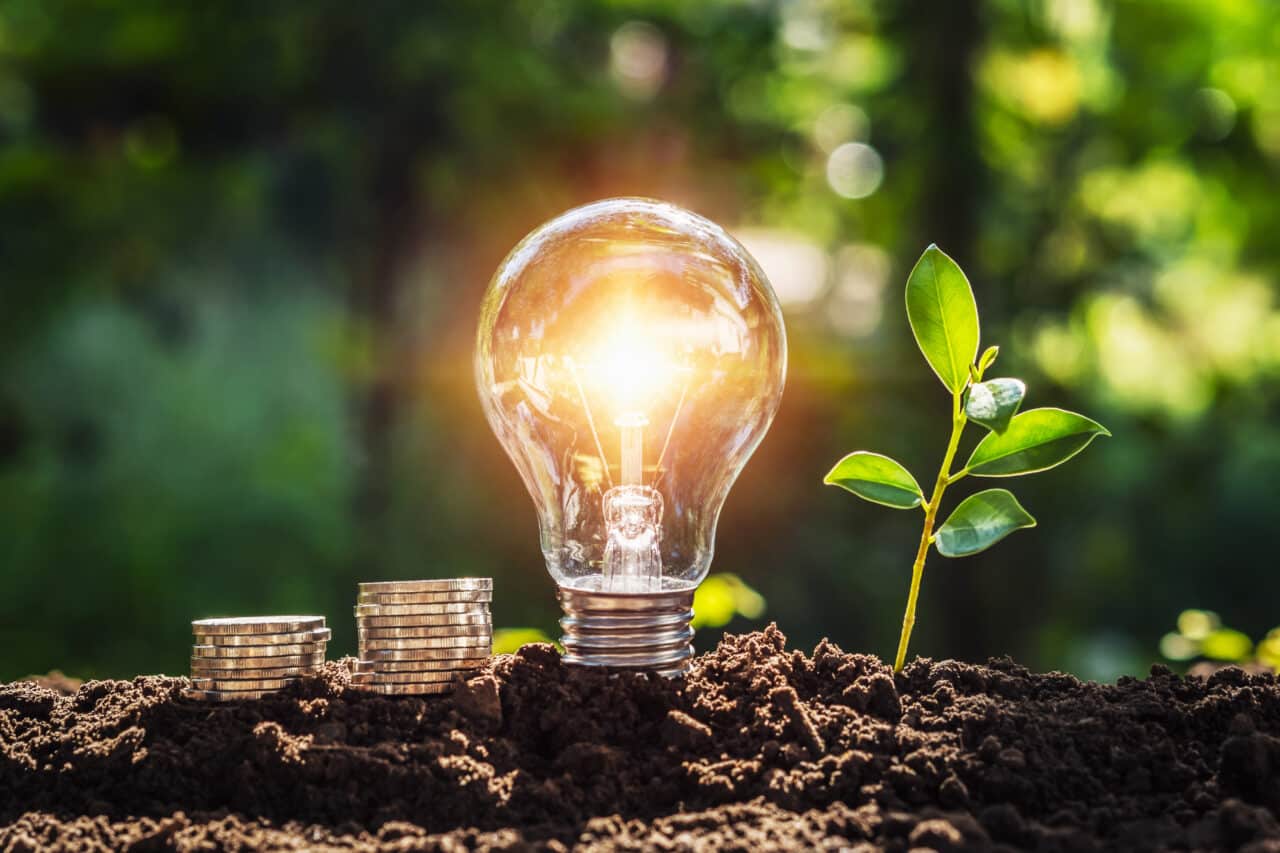
Costs – Is Automatic Sorting Profitable?
Envac Sorting reduces both collection and transport costs compared to traditional systems. Since the same containers and vehicles can be used for all fractions, there is no need to invest in new special bins or refuse trucks.
Conversion costs for multi-compartment bins and space for them are completely eliminated. In addition, several municipalities can share a facility, providing further savings and increased recycling rates.
Eskilstuna, as one of the few municipalities in the country, has been able to maintain and even lower its waste collection fees for customers thanks to its early investment in a sorting facility.
How it works
Click around in our illustration to learn more about how Envac Sorting works.

Collection
Envac Sorting can be used with your existing collection method, both manual collection and automated waste systems. The same sorting facility is used regardless of the collection method.
Household Waste
Residual waste or household waste, that is, waste that cannot be recycled as material, is transported to an incineration plant where it is used as fuel to produce district heating and electricity. In countries where waste incineration is not used, the waste is instead sent to landfill.
Further Handling
At the end of the sorting process, the sorted waste streams are collected in a large container. From there, they are transported to a material recycling facility to be reused according to the current requirements and directives in each municipality.
From Waste to Fuel
Organic waste is collected and can be sent to a digestion plant where environmentally friendly biomethane is produced, and has a market as fuel for cars and trucks. This reduces the need for fossil diesel fuel.
Sorting Reception
The bags are transported to a central sorting facility.
From the reception hoppers, the bags are conveyed via conveyor belts to the sorting stations, where they are sorted by colour.
No More Multiple Bins on Your Property
All bags are disposed of in the same container. The container is emptied by your regular refuse truck instead of separate trucks for each stream or type of bin. This reduces emissions and traffic, and as a resident, you avoid having lots of bins on your property to accommodate different stream.

Sorting at Home
Households sort their waste into different streams at home, using bags of different colours. One colour for each stream (waste type).
For All Types of Areas
Automatic sorting works for all types of areas: cities, rural areas, residential neighbourhoods… Different areas can also collect different numbers of fractions. Many municipalities even share a sorting facility, making it both cost-effective and flexible.
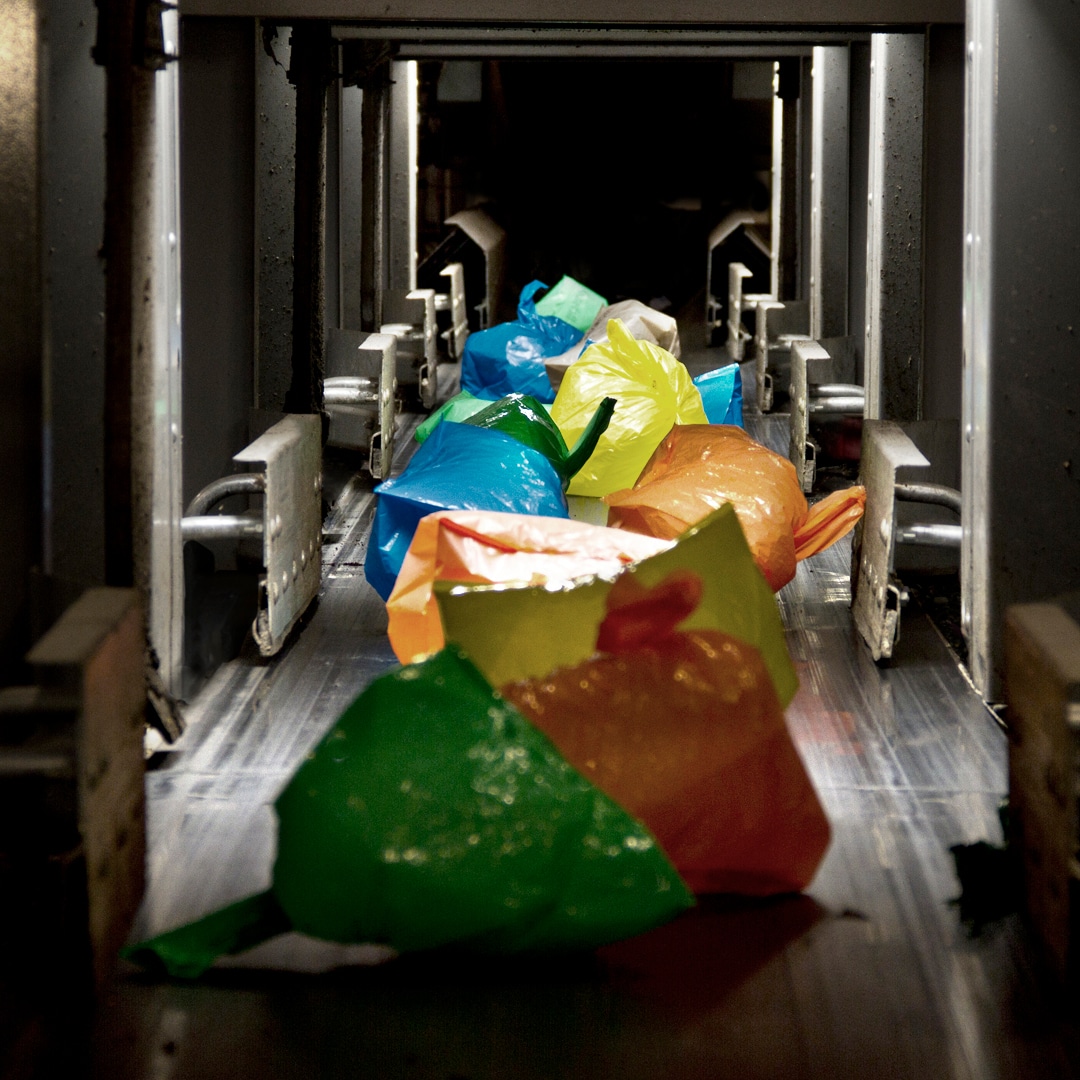
Automatic Sorting
The sorting facility contains various types of technology and sensors that automatically sort the bags by colour and ensure they enter the correct process.
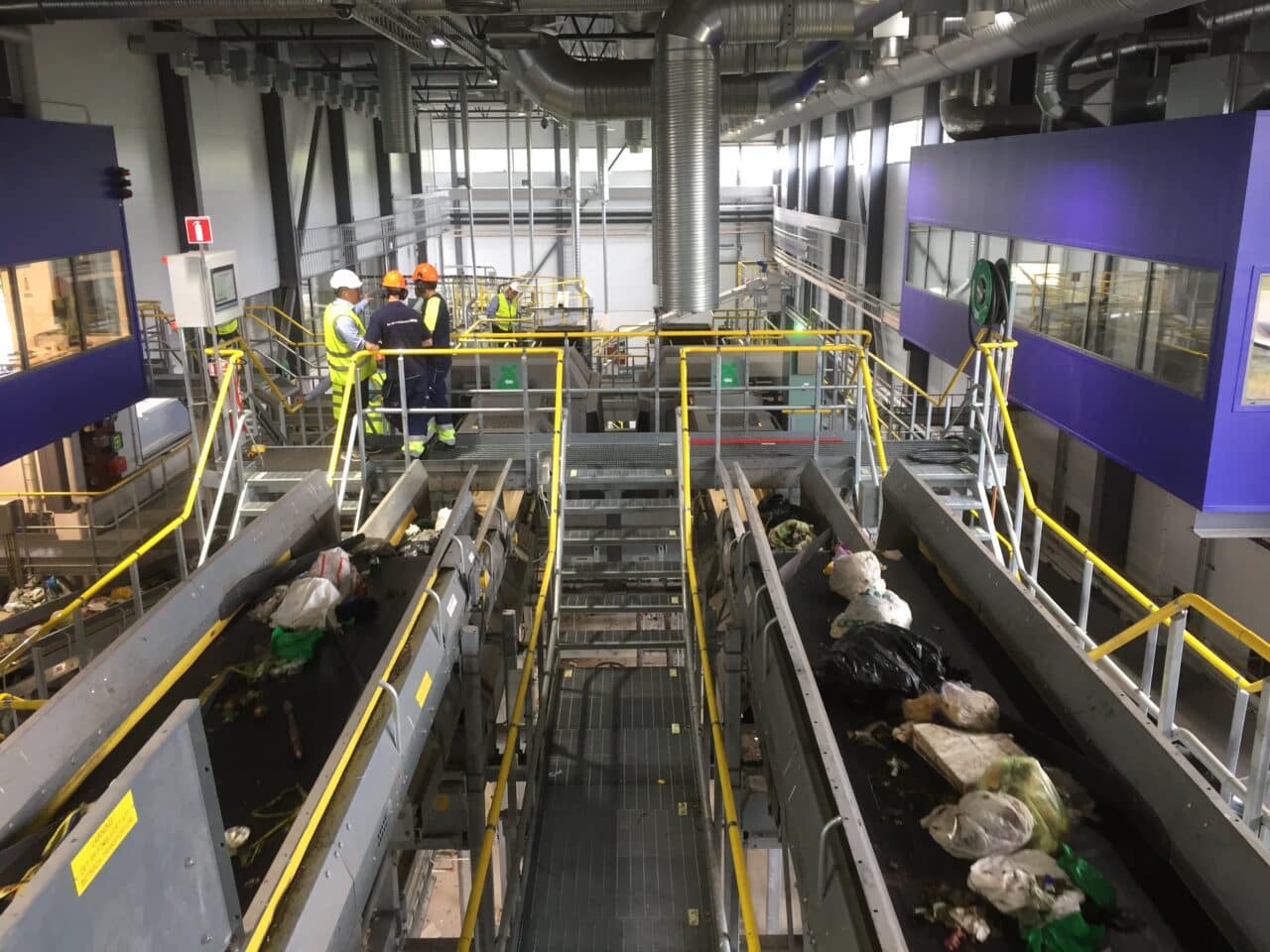
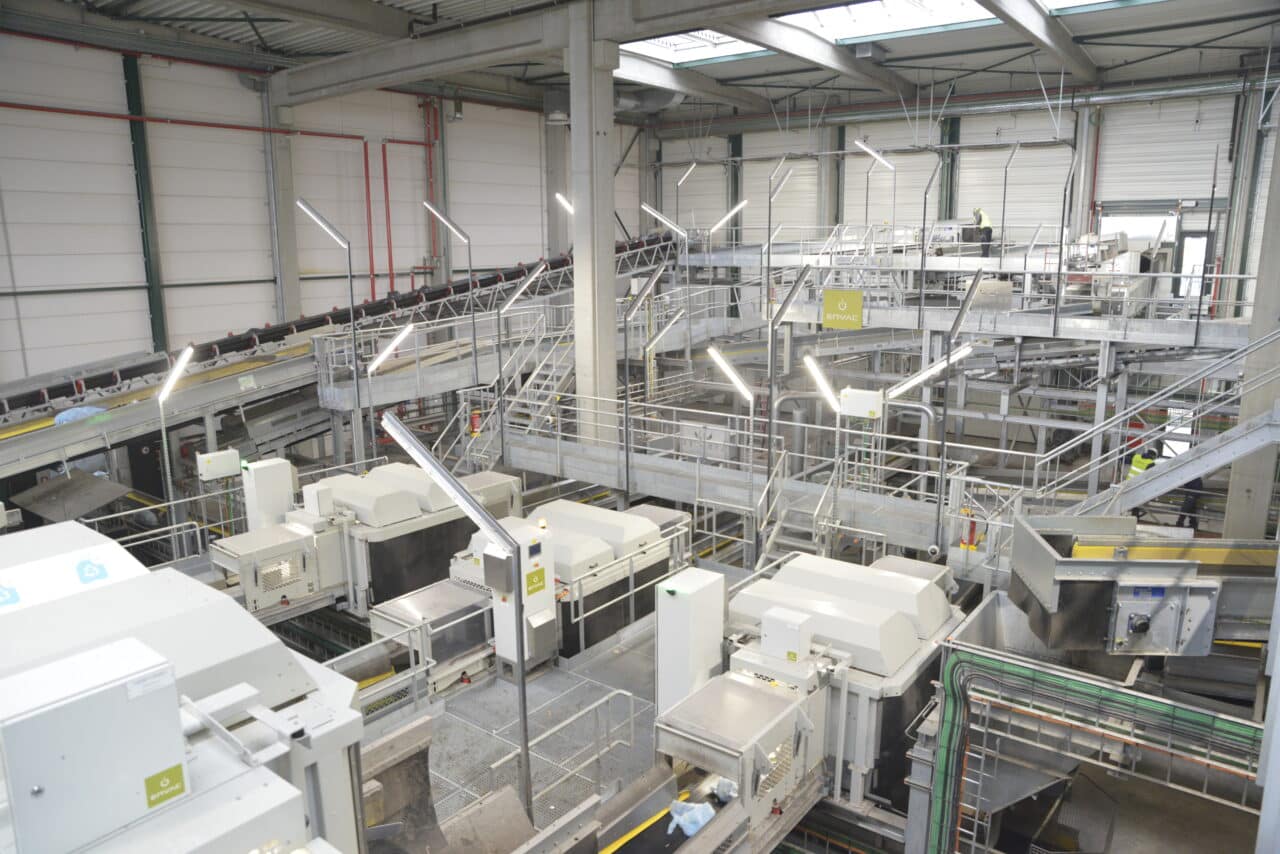

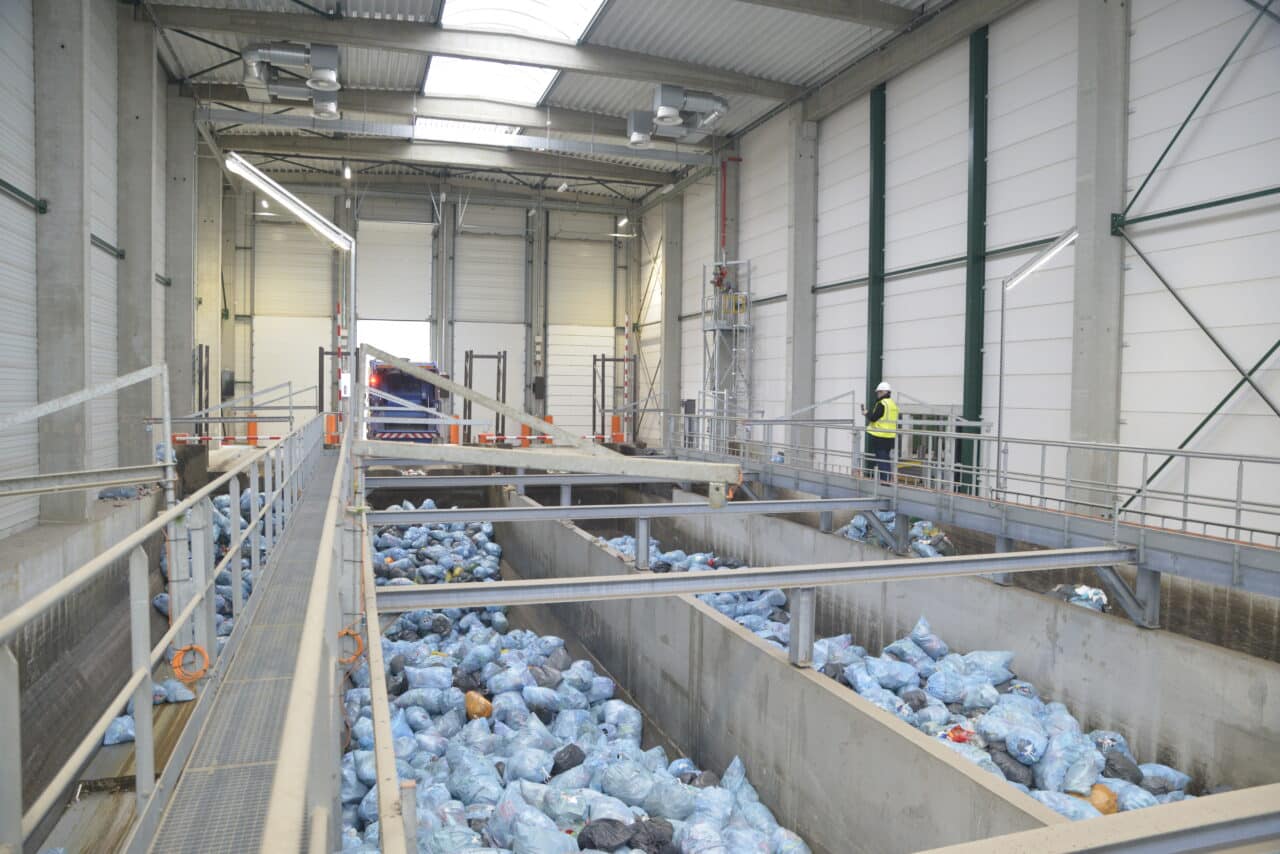
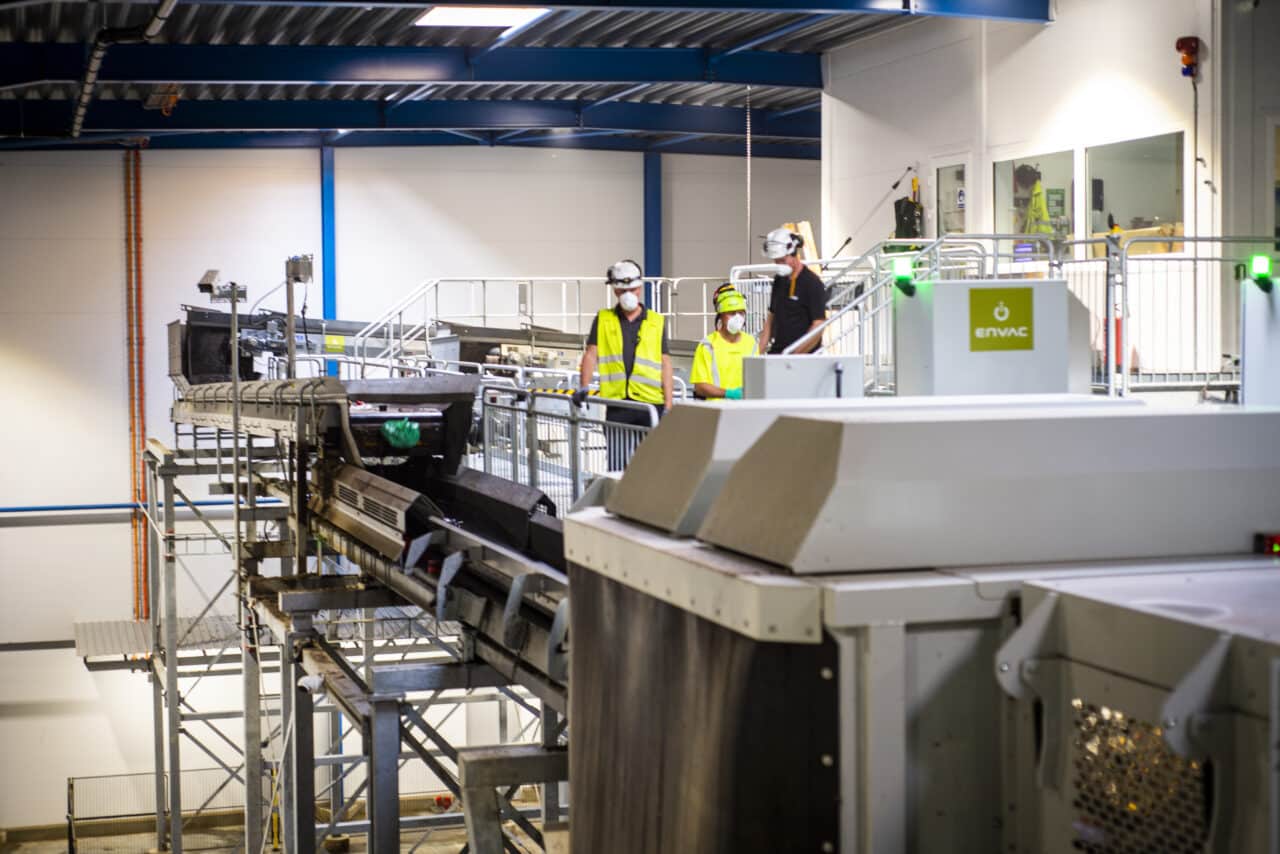
Future-Proof and Innovative
Sorting facilities are flexible and can easily be adapted for new fractions or collection methods. The system works equally well in cities and rural areas and can receive waste from several regions.
By optimising transport and increasing the sorting rate, the system reduces both carbon dioxide emissions and the amount of waste sent to landfill.
Product development is an important part of our work. We continuously review our products and explore opportunities for improvement, for example by testing different materials and solutions together with partners in the technology field.
One example is this project together with Litech, where sensors can identify and separate nitrous oxide canisters, which is a growing problem in waste management.
With our long experience in waste management and sorting, Envac can offer you as a customer both qualified advice and customised technical solutions. We analyse your specific needs and conditions to find the most effective and sustainable solution together.
FAQ
Sorting vs Recycling – What’s the Difference?
Sorting means that different types of waste are separated and divided, either already at the source (for example, source separation in a household), at a sorting facility, or through, for example, NIR technology (sorting waste with infrared sensors).
Recycling is the actual process where materials are converted into new products. Without proper sorting, recycled material risks becoming contaminated and thus unusable, which reduces the potential for a circular economy. Therefore, source separation and advanced sorting technology are crucial for maximising recycling and reducing environmental impact.
After Sorting – What Happens Next?
After the waste is sorted at the facility, it is collected in containers for further transport to energy recovery or recycling. Where the waste is sent depends on agreements and directives in each municipality.
Food waste, for example, can be sent for pre-treatment, which means the waste is ground, sieved, or otherwise processed before it goes on to digestion or another recycling process. This improves the quality of the biogas and fertiliser produced, reduces operational disturbances, and increases the overall recycling rate.
Effective pre-treatment is therefore an important part of a sustainable food waste management system.
Projects
Some of our selected sorting projects can be found below; click here to see all our projects.

Sorting Ljungby
Ljungby
In Ljungby and Alvesta, more than 27,000 households now sort their waste into colour-coded bags, which are processed at a modern optical sorting facility. Food waste is converted into biogas and biofertiliser, while the other fractions are recycled for a more sustainable society.
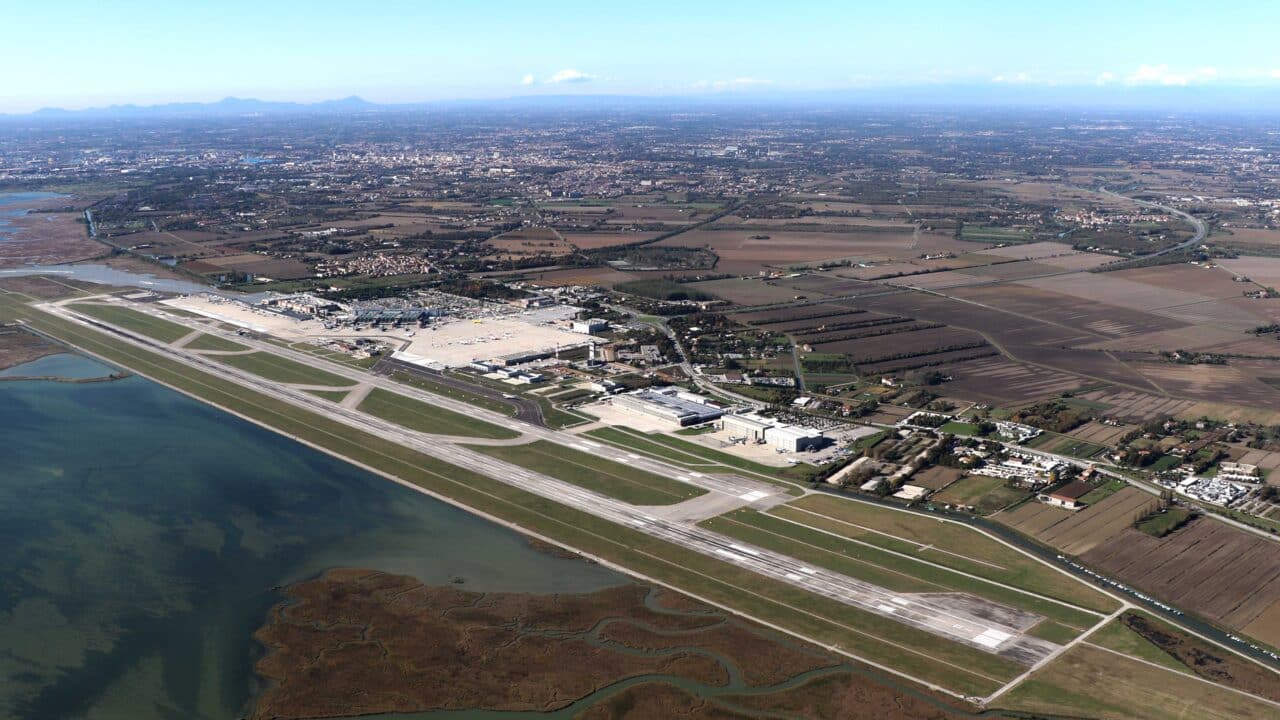
Airports Venice, Italy
Marco Polo Airport, Venice
The commitment to sustainability and achieving the “zero emissions” goal by 2030 is the starting point and basis for the Envac system installed at Venice Marco Polo Airport. As the number of travellers, goods and services at airports increases, efficient waste management becomes essential for logistical, environmental and safety reasons.
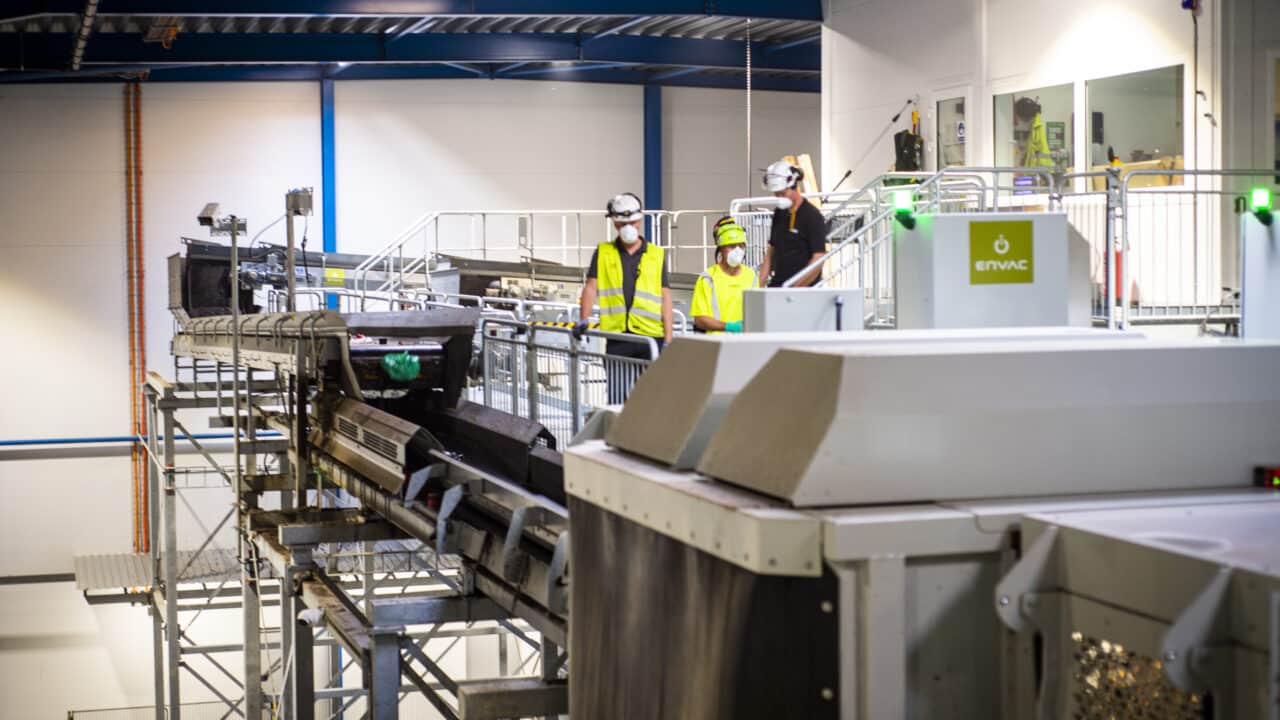
Sorting Aalborg, Denmark
Aalborg
In Aalborg, ~224,000 residents sort their waste into coloured bags, which are processed at Denmark’s first optical sorting facility. The solution makes things easier for households and more cost-effective for the municipality, while also reducing environmental impact.
Articles
Find all our articles here.
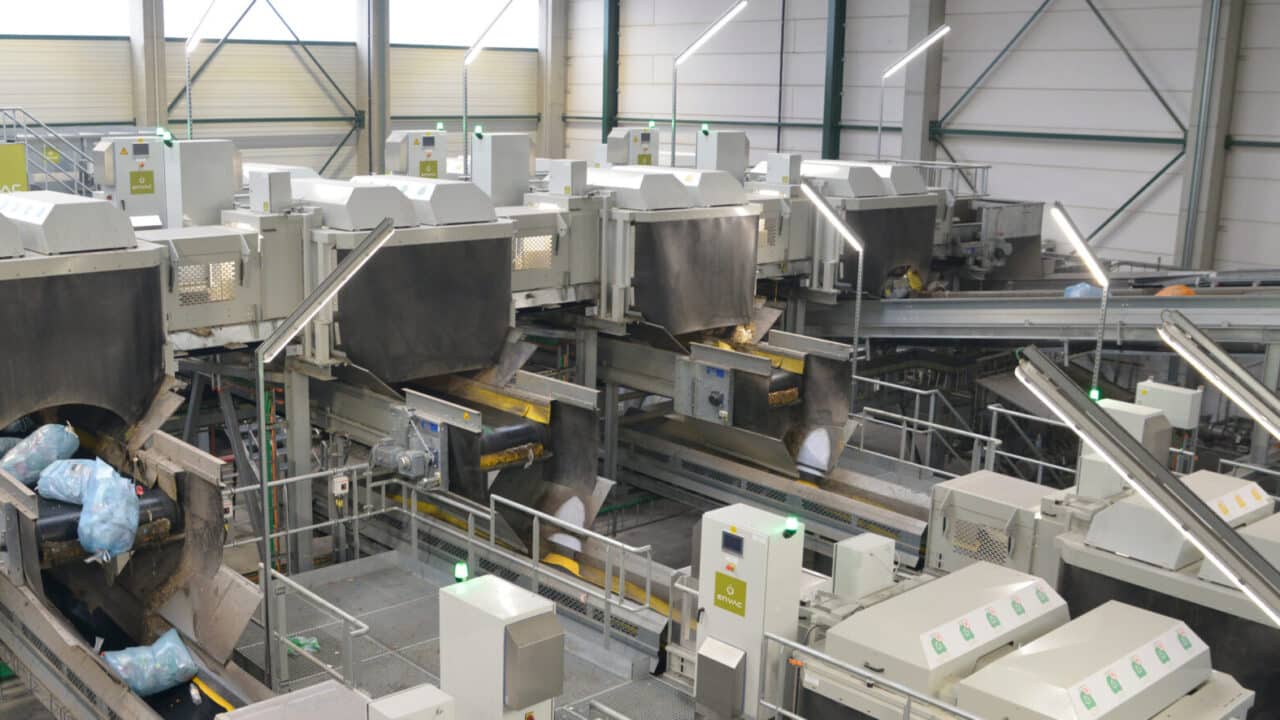
Optical Waste Sorting: A modern solution for sustainable recycling
Optical waste sorting is a modern, efficient, and environmentally friendly method of recycling that utilises advanced camera systems, sensors, and machine learning algorithms to swiftly and accurately identify and sort various types of waste materials for efficient disposal or recycling.

London’s Urban Expansion: Smart Waste Management Solutions for a Sustainable Future
As London’s population grows and new urban districts emerge, the city faces urgent waste management challenges. Sustainable waste solutions are essential as traditional methods struggle to keep pace with rapid urbanisation and evolving environmental standards.
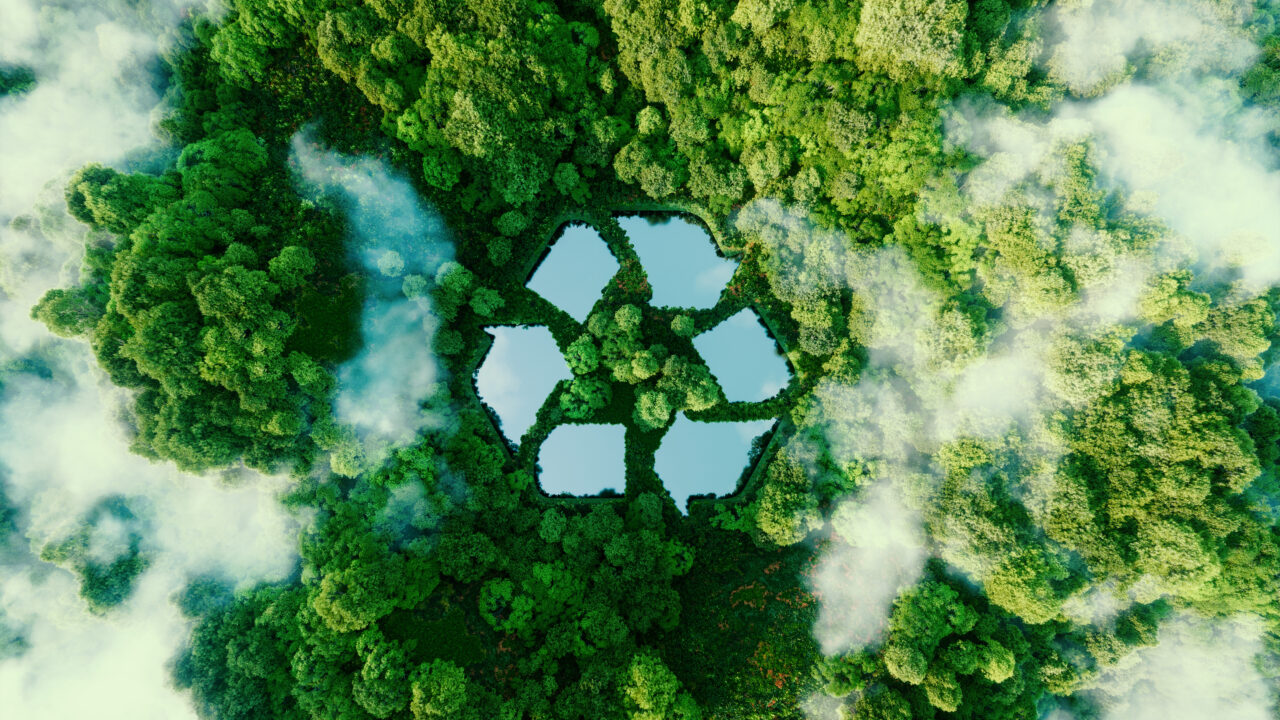
Sustainability Upgrades & Retrofit
How Modern, Automated Waste Collection Can Boost Recycling Rates, Cut Costs, and Save Energy
Traditional waste collection is costly, inefficient, and environmentally harmful. With rising labour expenses, health risks, and increasing pollution, the need for innovation has never been greater. Envac’s automated waste collection system offers a game-changing solution—reducing costs, cutting emissions, and boosting recycling rates. Through Energy Optimisation, Power Balancing, and End-user Engagement, cities like Stockholm and London are already seeing remarkable results. Discover how automation is transforming waste management and paving the way for a cleaner, more sustainable future.
